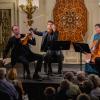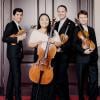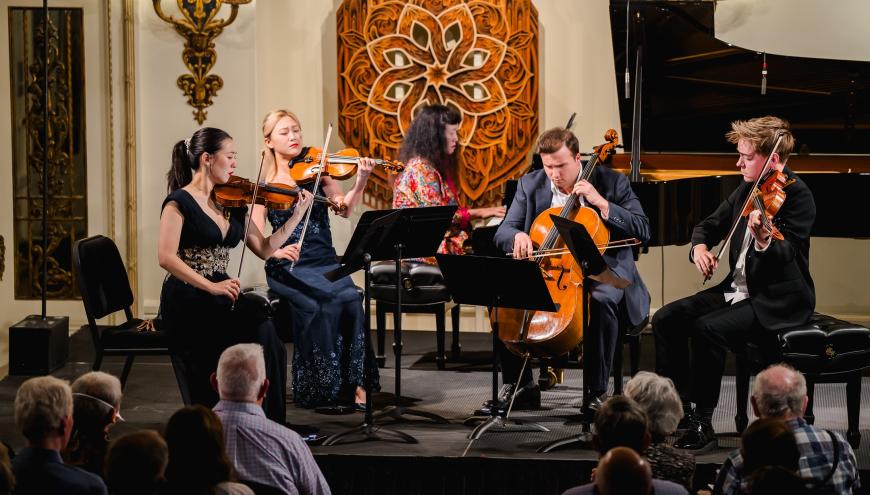
The Music@Menlo Chamber Music Festival, held on the Menlo School campus in Atherton, is actually four or five series going on at once.
This year’s special guest ensemble, the Calidore Quartet, is playing a cycle of all the Beethoven string quartets in a set of six concerts (the first of which was reviewed here last week). The mainstage festival artists — many of whom return year after year — are playing six concerts forming a history of chamber music from the Baroque to the present.
Besides that, there are free concerts by the two groups of advanced students under the care of Menlo’s Chamber Music Institute. The International Program artists, who are in their 20s, play “Prelude Performances” before the mainstage events, and the Young Performers Program artists, 19 and under (this year the youngest is 11), put on concerts every Saturday.
The mainstage artists coach the younger cohorts, both privately and in master classes that are also free and open to the public. And in recent years, the mainstage artists have begun actively collaborating with their International Program colleagues in what are titled “Overture Concerts.”
Menlo’s full spectrum of events was on display in “Prelude” and mainstage concerts on Thursday, July 27, followed by an “Overture Concert” on Friday.
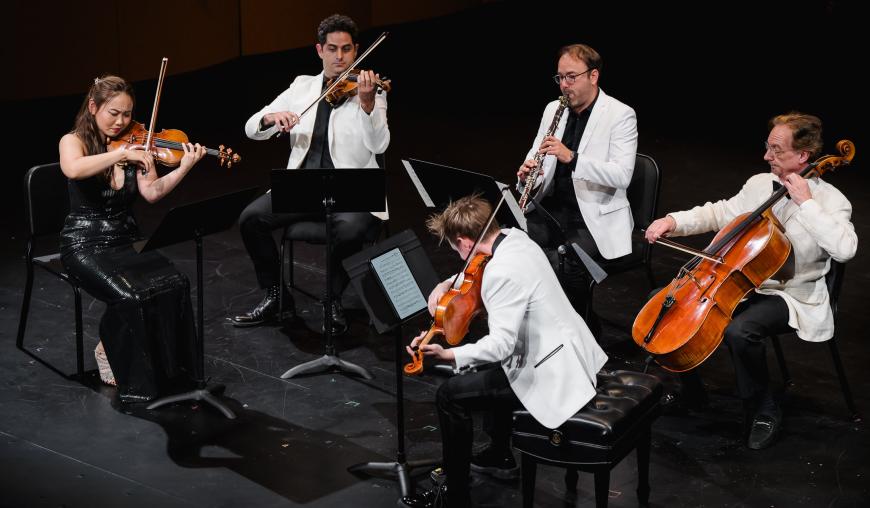
The fourth mainstage program at the Spieker Center for the Arts, “Romantic Twilight,” featured works from 1871 to 1903. It included deeply twilit pieces by Johannes Brahms, who cultivated the crepuscular, and Antonín Dvořák, who usually didn’t.
The monochromatic slab of Brahms’s Clarinet Quintet in B Minor, Op. 115, received a captivating, even gripping performance. The four string players, firmly led by first violinist Stella Chen, formed such a tight unit of heavy, dug-in playing that the work felt like a string quartet with clarinet obbligato accompaniment. Clarinetist Tommaso Lonquich wailed when called for, but there wasn’t much need for that. He attentively followed the import of Brahms’s cues and floated gently in and out of the texture, emerging for a countermelody or a brief dialogue with Chen and then disappearing back into the accompaniment. Second violinist Arnaud Sussmann, violist Matthew Lipman, and cellist David Finckel provided strong, faithful support. This piece has a reputation of being rather tuneless, but part of what made this performance so interesting is that the players firmly delineated Brahms’s themes.
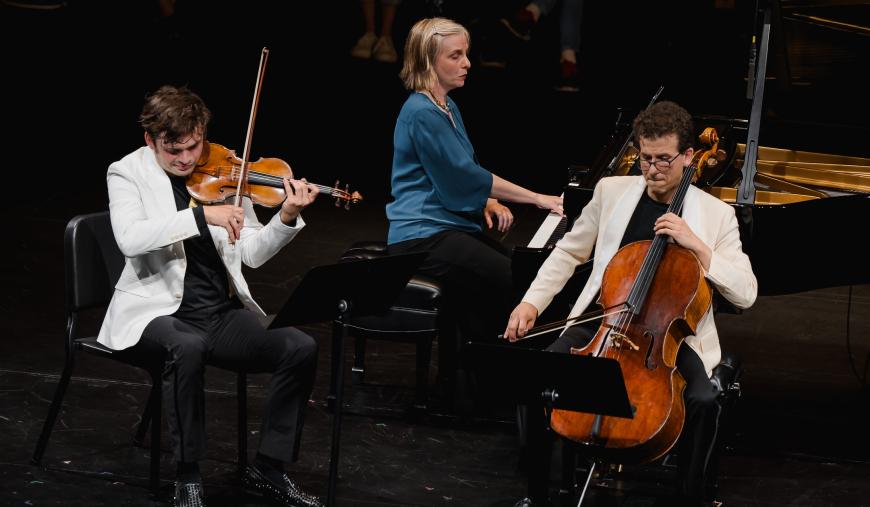
Dvořák’s Piano Trio No. 2 in G Minor, Op. 26, breaks out into some of the composer’s typical cheerfulness in its finale, but mostly it conveys deeply agonizing distress. Nicholas Swett’s program notes suggest that this is because Dvořák’s daughter had just died in infancy. Whatever the inspiration, it’s not the composer’s usual. Pianist Orli Shaham, violinist Francisco Fullana, and cellist Nicholas Canellakis gave a dark and severe performance. Strong, heavy rhythmic accents dominated the first movement and Scherzo.
A few brief pieces offered gentler tones. Fullana, accompanied by pianist Hyeyeon Park, presented two soft and sweet bonbons by Gabriel Fauré, the Morceau de lecture and Berceuse. Canellakis played Pyotr Tchaikovsky’s own arrangement for solo cello and strings of the Andante cantabile from his String Quartet No. 1. At the end of the piece, the cellist reproduces the original’s first violin line, which ventures up some two octaves above middle C and turns out to be a bit higher than the cello can comfortably manage.
Friday’s “Overture Concert,” in Stent Family Hall, comprised two hefty and extraordinarily interesting but relatively little-known quintets for piano and strings: Josef Suk’s in G Minor, Op. 8, and Edward Elgar’s in A Minor, Op. 84. Despite the tiny venue, this impressive concert did not entirely sell out. There’s still room for newcomers to hear fine music-making at Menlo.
Each work featured two mainstage artists. Festival Co-Artistic Director Wu Han was the pianist in the Suk, joined by violist Matthew Lipman, and Gilbert Kalish was pianist in the Elgar, with Arnaud Sussmann returning as second violin. String players from the International Program completed the quintets. The only thing distinguishing the younger performers from the elder ones was their faces. In music-making, they fully merged with their senior colleagues in both style and quality.
Suk’s quintet was composed when he was a young, imitative student of Dvořák’s, though he revised it many years later after his style had changed considerably. It’s a work of heavy but varied texture, full of canonic buildups for the strings and rattling piano passages in the Dvořák manner. A delightful pizzicato-based trio in the Scherzo was the lightest and most charming part of this performance. Violinists Anna Lee and Minchae Kim essayed duets with commendable grace; they changed character for a few dangerous-sounding chordal woofs in the first movement. Lipman and cellist Jakob Giovanni Taylor gave bold character to plenty of lyric solos, particularly in the Adagio.
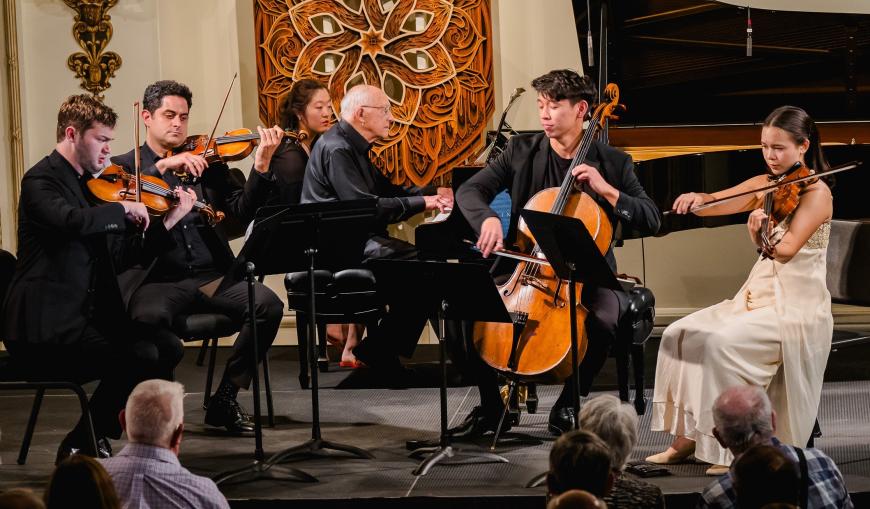
Elgar’s quintet was one of his last works before he fell mostly silent as a composer after his wife’s death. Despite its expanse, it has an incisiveness not characteristic of Elgar’s earlier compositions. The players here were diligent negotiators of the piece’s violent alternations between gentle, elegant, courtly music and fierce, abstract, even creepy passages. As in the Brahms, the string players formed a strong unit. Nathan Meltzer took the lead as first violin, with Sussmann right behind him. Violist Laura Liu and cellist Haddon Kay emerged from the unison in the slow movement, where Elgar, like Suk, gives these players plenty of solos. The result of the unitary strings and Elgar’s peculiar writing style was that Kalish’s piano, though strong and firm, felt as if it were somewhere else entirely.
The “Prelude” concert on Thursday, in Martin Family Hall, featured passionate renditions of Mozart’s String Quartet No. 22 in B-flat Major, K. 589, and Amy Beach’s Piano Quintet, Op. 67. With three piano quintets in two days, and Ernest Bloch’s Piano Quintet No. 1 coming up on Sunday, it was definitely piano quintet week at Menlo, as Wu Han observed in her introductory remarks Thursday evening.


